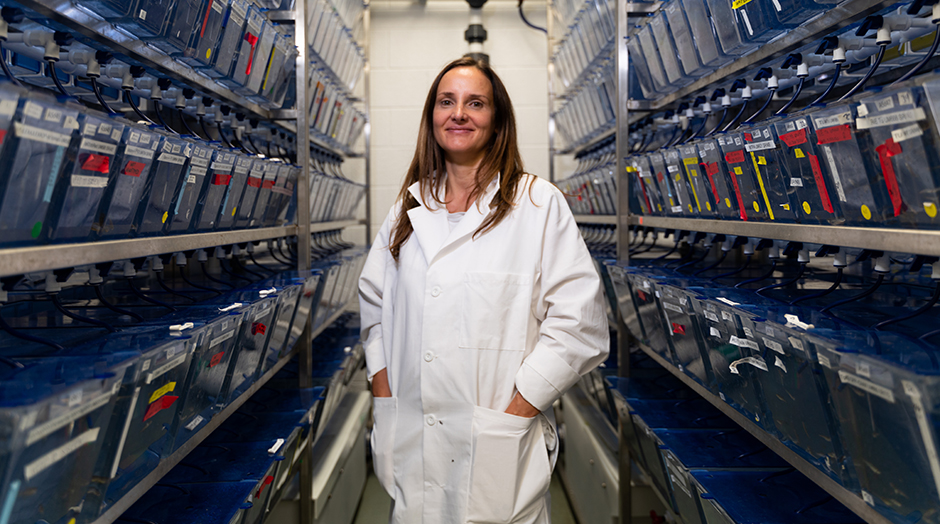Widely used for modern biomedical research, zebrafish share more than 70 percent of the human genome and possess the impressive power of regeneration. Dr. Sandra Rieger's research on appendage regeneration and nerve damage at the University of Miami has utilized zebrafish for years.
Now, in a recent study published in the Proceedings of the National Academy of Science (PNAS), Rieger uses these natural marvels with innate healing capacity once more to expand her research on the regenerative potential of hydrogen peroxide in wound repair and nerve regeneration.
As a postdoctoral researcher at the University of California, Los Angeles, Rieger made the groundbreaking discovery that hydrogen peroxide is produced in the epidermis and is responsible for promoting nerve regeneration following injury.
Rieger, who is currently an associate professor of biology in the College of Arts & Sciences, stated, "It was a great discovery, but at the time we did not know the exact molecular mechanisms that drove nerve regeneration after injury."
In her latest study, Rieger and her colleagues investigated how hydrogen peroxide stimulates nerve regeneration. With the help of fluorescent labeling of proteins in zebrafish and mutant analysis, they used time-lapse imaging to study this process.
"Time-lapse imaging provides a detailed view of the biological processes and relationships between nerves and skin, as well as how these interactions lead to regeneration," explained Rieger. "The findings we sought will answer the question of how the skin affects regeneration, as the skin is so important in producing factors that are essential to the regeneration process."
The study essentially found that hydrogen peroxide reacts to the Epidermal Growth Factor Receptor (EGFR) in the skin, which is essential for skin remodeling and aids nerve regrowth into the wound. “This is vital for the restoration of the skin,” said Rieger.
"However, we discovered that if hydrogen peroxide is not present in neurons, nerve endings also cannot regenerate," Rieger explained. "It appears that both neurons and skin require hydrogen peroxide to coordinate the regeneration of their nerve endings."
In 2011, Rieger published her first study as a postdoctoral researcher; now, nearly a decade later, she has advanced this work and shed more light on the molecular functions of hydrogen peroxide in stimulating nerve regeneration. This research will hopefully pave the way for future studies that lead to improved therapies for restoring skin and nervous system functions.
The study, “Coordinated NADPH oxidase/hydrogen peroxide functions regulate cutaneous sensory axon de- and regeneration,” is now available online at PNAS. The research team also includes Antonio Cadiz Diaz, Natalie A. Schmidt, Chia-Jung Hsieh, and Thomas S. Lisse from the University of Miami Department of Biology, and Mamiko Yamazaki from the Department of Regenerative Biology and Medicine at the MDI Biological Lab in Bar Harbor, MD.

